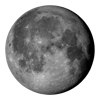36 Ursae Majoris
36 Ursae Majoris is a multiple main-sequence star of spectral class F8 in the constellation of Ursa Major.
36 Ursae Majoris visual magnitude is 4.84. Because of its moderate brightness, 36 Ursae Majoris is easily visible to the naked eye from locations with dark skies, while it might be barely visible, or not visible at all, from light-polluted skies.

Celestial Coordinates
Apparent
J2000
Galactic Coordinates
Finder Chart

Magnitude, Color, Spectral Class
The red dot in the diagram below shows where 36 Ursae Majoris is situated in the Hertzsprung–Russell diagram.

Star System Properties
36 Ursae Majoris is a visual double star which can be observed with binoculars or small telescopes. The table below shows key information about the 36 Ursae Majoris double sysyem:
Distance, Radial Speed, Proper Motion
36 Ursae Majoris is distant 41.89 light years from the Sun and it is moving far from the Sun at the speed of 9 kilometers per second.
Alternative Designations
Visibility from Your Location
36 Ursae Majoris is circumpolar and transits at 15:09 UTC (altitude: 85.6°)










